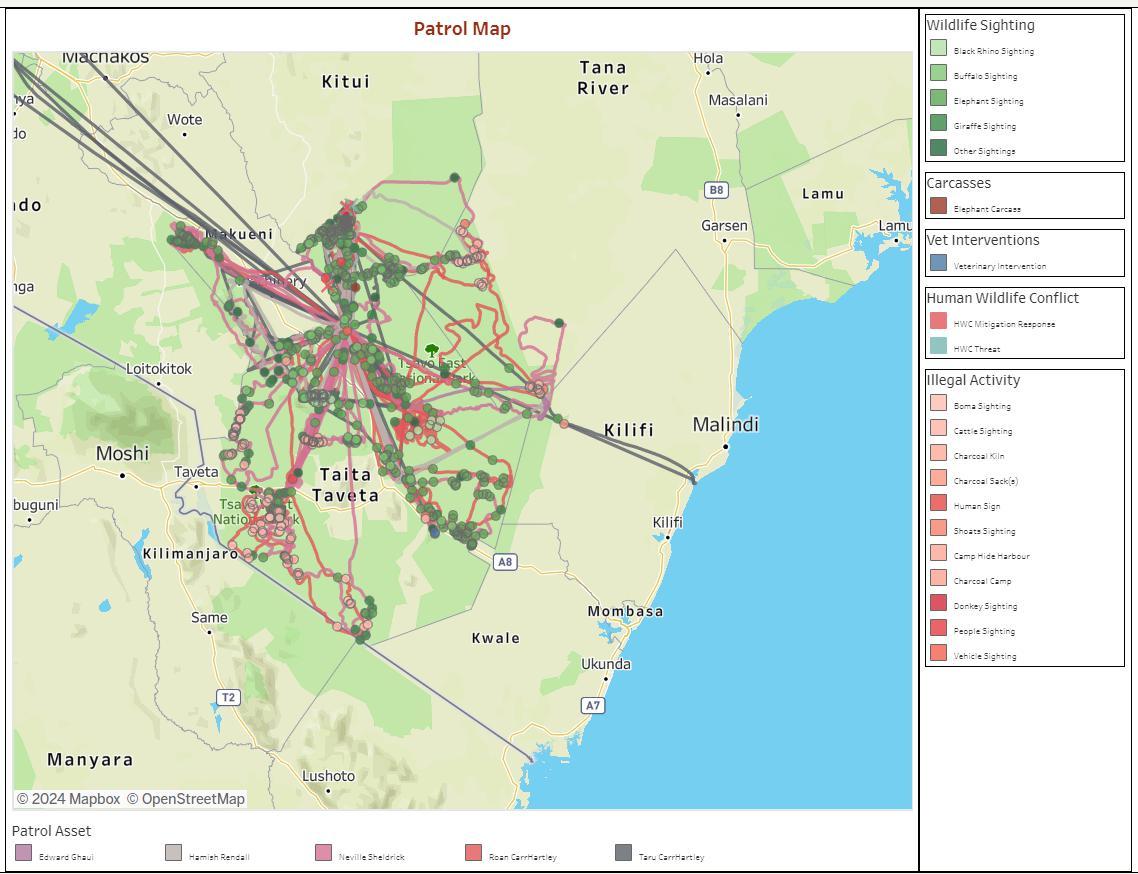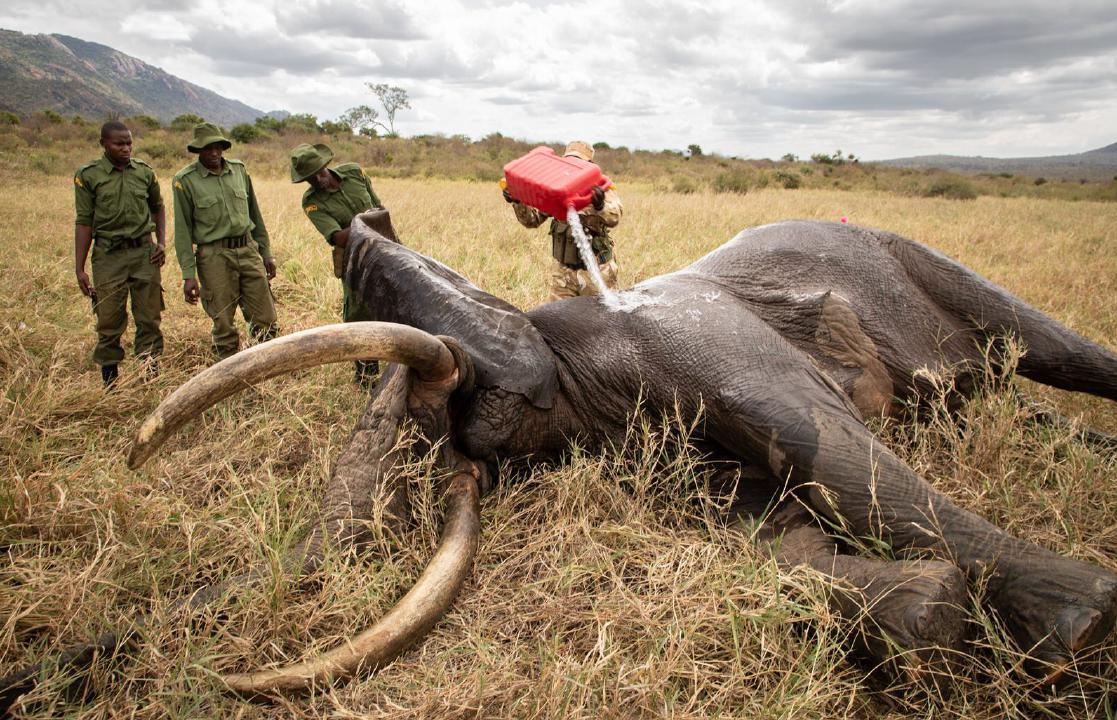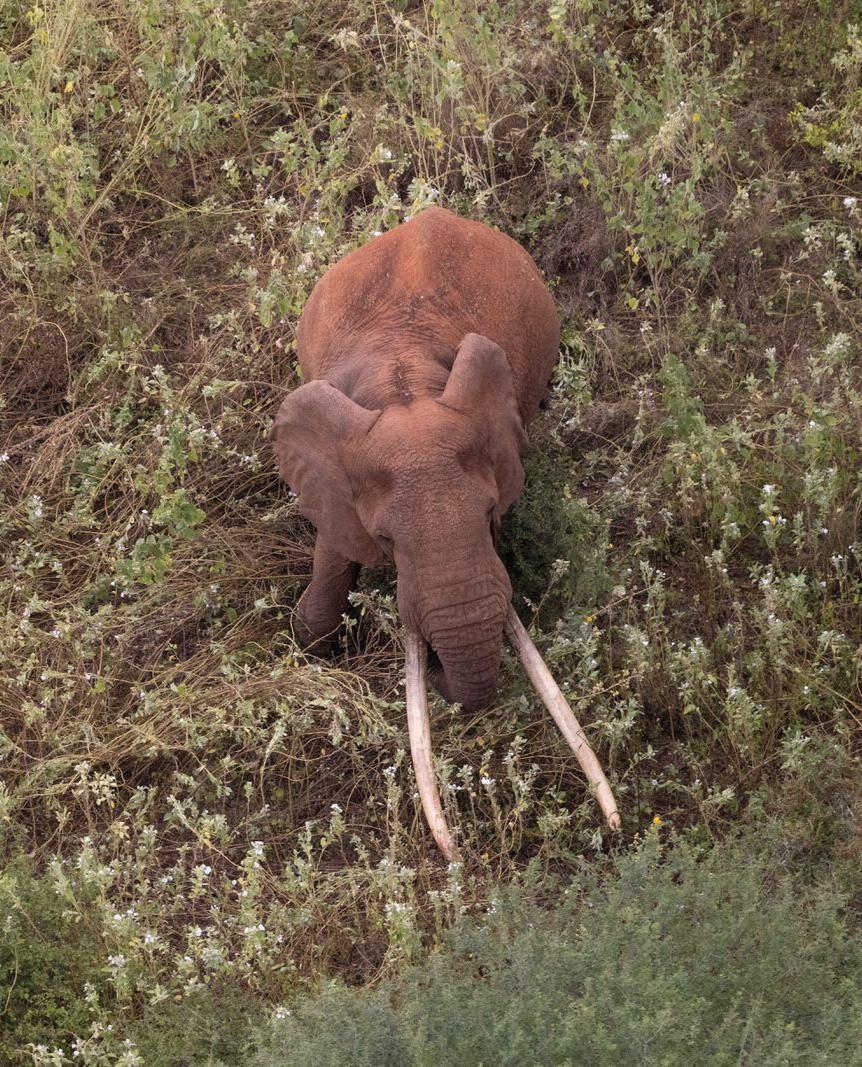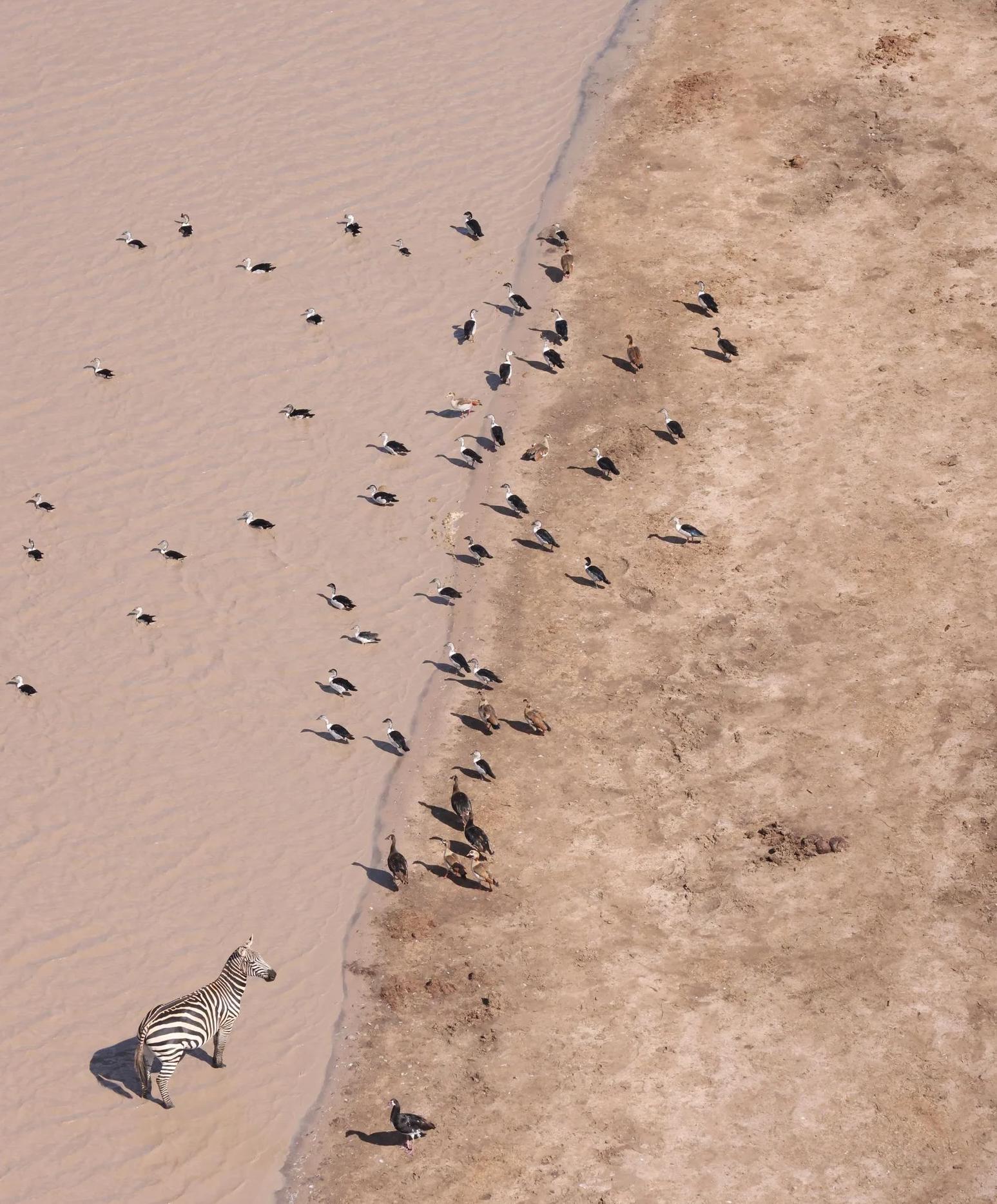


JUNE 2024




JUNE 2024
Operated in support of the Kenya Wildlife Service, Sheldrick Wildlife Trust's Aerial Unit monitors for illegal activity from the skies and offers rapid response assistance in anti-poaching operations, human-wildlife con�ict, veterinary treatments, orphan rescues, and all manner of �eld emergencies.
This report details Aerial Unit activities for June 2024
27,678
129 Hours �own:
Kilometres �own:
18,093
Tsavo East, Tsavo West, South Kitui National Reserve, Galana Ranch, Kulalu Ranch, Rukinga Ranch, Chyulu Hills National Park Areas patrolled:
There was very little change in the overall status of livestock in the park in June, with some areas improving throughout the month with thanks to persistent efforts by KWS ground teams especially in the northern area of Tsavo East On the other hand, in the northern area of Tsavo West, there was gradual return of livestock, which had formerly been under control
Very little active/fresh poaching activity was discovered in June, which is always positive. A small number of old poachers’ harbours and shooting blinds were found and later destroyed by ground teams Additionally, a number of veterinary cases during the month indicate poaching activity along the peripheries of the park and neighbouring ranches.

A total of eight veterinary cases were responded to by the Aerial Unit in one form or another. The �rst was not poaching-related, but a female adult elephant with a large tumour on her right �ank. Unfortunately, there is not much that can be done for a tumour in the �eld, and the team can only hope for it to be benign At the very least, the team was able to clean and treat the wound caused by the elephant rubbing the irritated area against trees Due to the condition and size of the growth and subsequent wound, the vet gave her a guarded prognosis.
Around the same time, another bull elephant was sighted in the same area with an arrow wound on his left front �ank The 40-year-old bull was �rst sighted during a routine �xed wing patrol and later darted from a helicopter to be treated. Prognosis for this patient is good. Two other cases, this time for a snared giraffe and snared zebra were attended to on Rukinga Ranch The giraffe has been sighted by Wildlife Works and reported to KWS and SWT While the helicopter and KWS/SWT Mobile Vet Unit were on site treating the giraffe, the zebra was also sighted nearby Both animals were relieved of their snares and treated for their injuries. The zebra was unfortunately only given a guarded prognosis due to the severity of its injury. The helicopter was also instrumental in the darting of a bull elephant sighted near Ithumba with a 6-month-old arrow wound which had remained persistently infected Upon inspection, the vet noted the wound was very deep, which may have contributed to the dif�culty in healing.
There were also two unsuccessful searches for injured elephants conducted by �xed wing aircraft, both for bull elephants with reported snares It was later discovered that one of these was not in fact suffering from a snare injury, but a long-since-healed foot injury, causing it to drag its foot, giving the impression it was dragging a log attached to a snare. On one occasion, a �xed-wing aircraft was deployed to transfer the Voi Vet Unit to Galana Ranch to treat another bull elephant with a possibly broken leg Sadly, upon arrival, it was discovered that the bull had succumbed to his injuries A post-mortem revealed a shattered leg bone, possibly caused by a bone infection from a spear injury


During June, only one elephant carcass was discovered during a helicopter patrol with tusks intact and assumed to be from natural causes. The tusks were retrieved and handed over to KWS for safekeeping.
A small number of Human-Wildlife Con�ict cases were attended to during the month and surprisingly, only one of them involved an elephant. On one occasion, a helicopter responded to a callout to search for a lion reportedly killing donkeys in the community. Thick bush in the vicinity hindered the search, which was ultimately unsuccessful.
The helicopter was once again deployed to assist a desperate community along the Athi River which had suffered the loss of two of their members, including a child, to a crocodile. Our helicopter pilot skilfully slung a lion trap onto the opposite riverbank from where the attacks occurred and where the crocodile had been seen dragging the bodies On the �rst attempt, a smaller crocodile and likely not the culprit was captured and re-released deep within the park The second attempt yielded a 13-foot crocodile, which was positively identi�ed. Due to the size of this crocodile, it was slung in the trap from a helicopter to another location deep within the park and far away from any human population.
The �nal HWC incident responded to by the Aerial Unit was a report of a problem elephant breaking out of the park fence and raiding crops in the community. A thorough search was conducted without success, and it was later discovered the bull had taken to breaking out at night and then breaking back into the park before daybreak Several breaches in the fence were detected


Highlights during the month included multiple big cat sightings as well as a very exciting sighting of a pack of wild dogs with puppies. The population of wild dogs took a recent hit because of a suspected rabies outbreak, so new births are very positive news




The Aerial Unit, as with all Sheldrick Wildlife Trust's conservation projects, is a donorfunded initiative Thank you to our global supporters, who help us secure Kenya's habitats for the future and make an impact in the �eld, each and every day